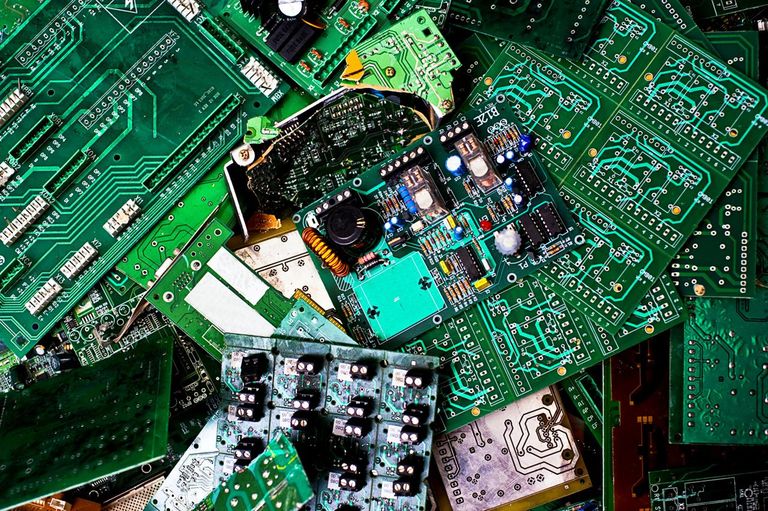
Electronics waste, commonly known as e-scrap and e-waste, is the trash we generate from surplus, broken and obsolete electronic devices. E-waste or electronics recycling is the process of recovering material from old devices to use in new products.
Free Recycling of Electronics for Tucker & Tucker Customers
If you are a current or recent customer, we encourage you to take advantage of this valuable and important service. When you upgrade to a new TV or receiver, speakers or any electronic media equipment, we will dispose of it and recycle it for you free of charge. Why is this important? Read on for more information about e-waste recycling from a recent post from TheBalance.com.
Frequently Replaced Electronics
We are creating e-waste at a rapid rate. Some of the most commonly replaced electronics include cell phones (replaced every 22 months), desktop computer (replaced every 2 years), portable music players (replaced every 2/3 years), DVD player (replaced every 4/5 years), printer (replaced every 5+ years), and televisions (replaced every 10+ years).
So, with very short useful life, these electronics transition into e-waste at a rapid pace. In fact, it was estimated that there were 422 million unused and unwanted cell phones accumulating in people’s homes by the end of 2015.
According to the tech research company, Gartner, in 2015 alone, an estimated 1.9 billion cell phones were sold worldwide. That’s nearly one for every four people alive. Every year millions of electronic devices such as mobile phones, TVs, computers, laptops, and tablets reach the end of their useful life.
What happens to devices at the end of their useful life?
Unfortunately, the majority of these electronic products end up in landfills and just a tiny percentage comes back as/in new electronic devices. According to a UN study, in 2014 alone, 41.8 million tons of electronic waste (e-waste) was discarded worldwide, with only 10 to 40 percent of disposal done properly.
Electronics are full of valuable materials including copper, tin, iron, aluminum, fossil fuels, titanium, gold, and silver. Many of the materials used in making these electronic devices can be recovered, reused and recycled, including plastics, metals, and glass. In a report, Apple revealed that it recovered 2,204 pounds of gold —worth $40 million—from recycled iPhones, Macs and iPads in 2015.
Some more E-waste recycling facts
- Every year, Americans throw away around 9.4 million tons of e-waste, an amount which is more than any other country in the world.
Currently, e-waste constitutes 2 percent of the municipal waste stream in the U.S. E-waste is currently the fastest growing portion of municipal solid waste in the U.S., increasing by 5 percent annually. - Every year, between 20 and 50 million tons of e-wastes are tossed into landfills, and just 10 to 18 percent of total worldwide e-waste generation is recycled. But according to EPA, current E-waste recycling rate is just 12.5 percent.
- Every year, Americans throw away cell phones containing over $60 million in silver and gold.
- Much of the e-waste generated in the U.S. is exported to China, India, Pakistan, Nigeria and Ghana creating a dumping problem in those countries.
Benefits of E-waste recycling
Recycling e-waste has various environmental and economic benefits:
- According to EPA, recycling one million laptops can save the energy equivalent of electricity that can run 3,657 U.S. households for a year. EPA also states that by recycling one million cell phones, we can recover 75 lbs of gold, 772 lbs of silver, and 35,274 lbs of copper and 33 lbs of palladium.
- According to the Electronics TakeBack Coalition, it takes 1.5 tons of water, 530 lbs of fossil fuel and 40 Ibs of chemicals to manufacture a single computer and monitor.
- 81 percent of energy associated with a computer is used during production and not during operation.
Electronics contains various toxic and hazardous chemicals and materials that are released into the environment if we do not dispose of them properly. - Recycling e-waste enables us to recover various valuable metals and other materials from electronics, saving natural resources (energy), reducing pollution, conserving landfill space, and creating jobs.
